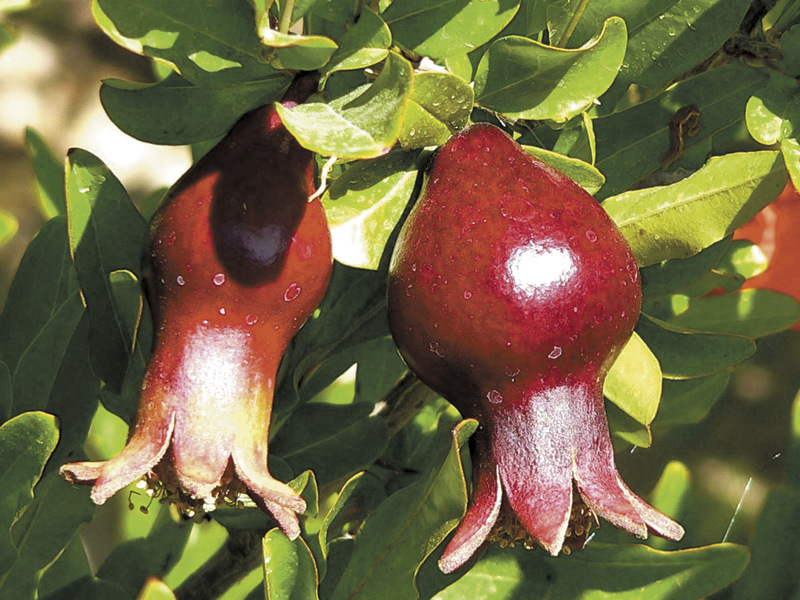At 90 miles long, Sochi is the longest city in Europe. The nearby Mount Elbrus is the highest mountain in Europe. And of course, it is home to the Winter Olympics. But Sochi is famous for one other thing. It is home to probably the most cold-hardy pomegranate plant, the Sochi dwarf pomegranate (Punica granatum).
This small miracle of a house plant grows just three to four feet high and three feet wide. The many branches are covered with attractive tiny, bright-green leaves. But the real show is the tremendous orange-red blooms that almost cover the plant from late spring throughout the summer. The blossoms are followed by small, golf-ball-sized pomegranate fruits.
Because Sochi dwarf is hardier than other pomegranates, it will do well outdoors in coastal Delaware.
It is hardy in USDA zones 6-10. You may even be able to grow it outdoors in colder areas if you plant it in a sheltered garden spot such as against a wall out of the wind.
While Sochi pomegranate is self-fertile, you may get better crops by planting two for cross-pollination.
Whether indoors or out, Sochi pomegranates do best in full sun or at least half a day of sun. Always use a well-draining potting soil, and outdoors avoid any area that stays wet.
The tiny plants will bear fruit in just a year or two.
Sochi pomegranates are available from mail-order nurseries such as Raintree Nurseries (www.Raintree.com) or Park Seeds (www.Parkseeds.com).
For a potted pomegranate, make a cone of potting soil inside the pot. Set the root ball on top of this soil cone and carefully fill in with more potting soil. Water the newly planted tree so there are no air pockets around the roots. Once a week water thoroughly so that water comes out of the drainage hole in the bottom of the pot.
During the first two years, fertilize with a good organic fertilizer in November, February and May. Once established, you can cut back to fertilizing just in November and February.
If your Sochi pomegranate grows too thickly, you can cut out any branches that crisscross.
The name pomegranate comes from medieval Latin pomum “apple” and granatum “seeded.” And it is a very seedy fruit. But those seeds are sweet, juicy and full of flavor. Try sprinkling pomegranate seeds over salads, or as a topping for ice cream. Or just munch them by themselves. Pomegranate juice is high in vitamin C, potassium, vitamin B5 and antioxidants.
An easy way to separate the seeds from the pulp is to scoop the fruit into a bowl of water where the seeds will sink and the inedible pulp will float to the surface.
Many gardeners grow pomegranates just for their beautiful flowers and use the fruits for long-lasting decorations.
With the dwarf Sochi pomegranate you can grow your own snacks, your own decorations and add a touch of the exotic to your indoor winter garden. With a nod to James Bond, this plant is truly from Russia with love.























































